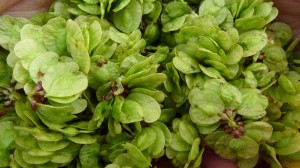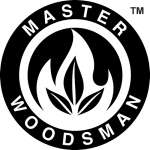 To most it’s a weed tree. Considered useless and unwanted. To me, it’s a part of the heartland now. A permanent fixture across wind breaks and homesteads as well as in the cities and for Bushcraft. It was after the dust bowl that started in Kansas, Oklahoma, and Texas, that these trees were widely planted along with Juniperus virginiana (now an invasive wreck and equally important for the bushcrafter!) and Populus deltoides (Kansas state tree). They are everywhere today. Why not use them for Bushcraft?
To most it’s a weed tree. Considered useless and unwanted. To me, it’s a part of the heartland now. A permanent fixture across wind breaks and homesteads as well as in the cities and for Bushcraft. It was after the dust bowl that started in Kansas, Oklahoma, and Texas, that these trees were widely planted along with Juniperus virginiana (now an invasive wreck and equally important for the bushcrafter!) and Populus deltoides (Kansas state tree). They are everywhere today. Why not use them for Bushcraft?
I’ve been using this tree for awhile and picked this book up last summer. It’s Samual Thayers book titled “The Forager’s Harvest”. But I never heard mention of Siberian Elm on YouTube or the forums. Why not? I say let’s use it. Siberian Elm (Ulmus pumila) has other names and is probably best used as:
- Food from the fruit – These “junk” trees yield a crazy amount of tasty food. This will take winnowing the seeds.
- Shelter – Both for wind breaks on homesteads, as well as for more primitive and bushcrafty means of shelter.
- Treenware – Beautiful bowls and cups can be made although it’s a little harder to carve than the softer Salix Negra in my opinion but it has gorgeous grain pattern. I also epoxied some makeshift knife scales for an old broken pocket knife so you can outfit all dinner cutlery as well. 😉
- Firewood – (It’s everywhere, and it grows so fast. Also much of what they planted throughout the 1930’s here is reaching it’s expiration anyway so there is no shortage. That’s a good thing because now we have a seemingly endless supply. Not my all-time favorite choice, but again the quantity solidifies the decision to use it over the superior Bois d’arc that I have far fewer trees of and that I naturally tend to reserve for personal stove use.
- Fire – Firestarter via punkwood and inner bark, splitwood(not the best again), shavings, scrapings, etc. Many articles and videos on this subject utilizing other species, so there is no need to get any deeper for fire.
Here is a bit of a quick background of the tree from an actual Dendrologist:
What I want to focus on, though, is the fruit. This comes in the form of what’s called a samara. The samara is kind of like a papery flower wrap over the seed. It’s as if the fruit has wings and it can fly away from the parent tree as far as the winds will take it. Pretty cool! So how do we get this tasty treat?
The following is from Samual Thayers book titled “The Foragers Harvest”.
“The part of the Siberian Elm that one eats is the Samara. These dime-sized, light green wafers hang from the twigs in handful-sized clusters in spring. As soon as the Samaras appear they are ready to eat – and as long as their papery wings are light green and tender, showing no signs of drying or browning, they are absolutely delicious. In the center of the wafer is a small seed that is sweet, soft, and nutty. It is very easy to pull handfuls of these fruits from the lower branches of open-grown elms in as vast a quantity as one might desire, as the trees produce them profusely.
The time to get Siberian Elm Samaras is in the middle of spring, just as the leaf buds are beginning to open. In two weeks the leaves will be fully formed and the Samaras will have become tough, so the season for collecting them is short. You don’t want to miss it.
Elm Samaras are simply gourmet. Their size, unique appearance, and pleasant texture make them fun to eat, which I see fit to do several times per day during the brief blessing of their availability. While Siberian Elm Samaras are in season, they are tops on my list of salad ingredients.
You don’t have to eat them raw, however. Embellish any soup or cooked vegetable list by throwing a handful of Samaras into it. Use them to garnish pasta dishes or to make rice pilaf colorful and interesting. Omelettes, lasagna, tacos: Siberian Elm Samaras have such a mild and agreeable manner that they belong almost anywhere you could put them.
Once the seeds of the Siberian Elm ripen, the Samaras become dry and brown. They flutter from the tree in the breeze, littering the ground below and sometimes getting blown into convenient piles. These can often be collected very easily. After they are thoroughly dried, you can rub and winnow them to procure rather soft, lentil-like seeds. The ripe seeds are delicious raw or cooked. The flavor reminds me of a cross between sunflower seeds and oats. They can be added to hot cereal or used in many ways like other whole grains, but their texture seems too soft or oily to make good flour. I have only begun to experiment with the ripe seeds of Siberian Elm, but they show immense promise as a versatile, delicious, wholesome, and easily stored wild grain, ripening at a time when others are not available.”

Siberian Elm Wetwood
Regarding conservation, you’ll want to keep your trees properly spaced and trimmed as the siberian elm is very susceptable to something called ‘Wetwood’. You might have seen this before where a tree has a wet area with almost bleached white bark. Some folks at UC Davis describe Wetwood as this:
Wetwood or Slime flux
“Wetwood is caused by several species of bacteria; yeast organisms may also be involved. Wetwood is especially common in elm and poplar, but affects many other plants including box elder, hemlock, magnolia, maple, and oak. Affected trees have stained areas of wood that exude fluid. Usually trees about 10 years of age or older exhibit symptoms. Foliage wilt and branch dieback can occur on severely infected trees. Although it can be unsightly, affected wood may be as strong as healthy wood.”

Poison Ivy Vine
Hopefully the reader will take note that this tree can cause allergic reactions and therefore you should be cautious of eating a couple pounds of seeds without having had previous interactions. Also I’d like to point out that outside of trimmed golf courses, the Siberian Elm will become a likely candidate as a host tree for Poison Ivy. You’ve been warned! 🙂

Morels
In my neck of the woods one will usually find morels nearby the Elm tree on North facing slopes in the narrow springtime window. 😉


2 Responses to USING THE SIBERIAN ELM FOR BUSHCRAFT